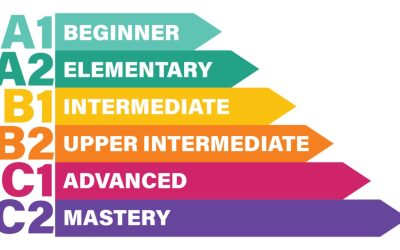Who Says Learning a Language is Easy?
If someone tells us that learning a language doesn’t have to be difficult, that it doesn’t have to be challenging, or that it doesn’t have to take much time, let’s ask ourselves: What are they trying to sell us?
Let’s Start Busting Myths
Learning English is a challenging process full of ups and downs. Below, we debunk some common misconceptions.
1. Learning a language takes time and effort
There are no magical shortcuts. Language learning requires practice, consistency, and patience. It’s not about memorizing word lists but integrating the language into daily life.
2. It is often frustrating
The learning process comes with moments of frustration. However, every mistake is an opportunity to improve and move forward.
3. It can be intimidating
Speaking a new language can make us feel insecure, but overcoming that fear is key to making progress.
4. It can sometimes be frustrating and embarrassing
Feeling frustrated when results don’t come immediately is normal. The key is perseverance and maintaining a positive mindset.
5. At times, it may feel like you’re stuck
In reality, you are always moving forward. Learning is a continuous process that requires patience and time.
Who Said Learning Was Just a Formality?
How many times have we seen advertisements promising we can learn English in six months, without studying grammar or doing extra work? They sell us a kind of “English osmosis” that magically takes over us. Let’s be clear: the absurdity of the term matches the unrealistic nature of the product they’re trying to sell.
Moreover, these false promises ignore the best part of the journey:
- The process itself.
- Building from within.
- Walking the path and discovering who we are along the way.
Why Does “Frustration” Have Such a Negative Connotation?
The aspects described above as the best part of the process come with many situations and feelings that are not always perceived as pleasant:
- “I can’t do it.”
- “I don’t understand.”
- “I imagined it differently.”
- “I thought I would enjoy this more.”
Frustration is a natural and necessary part of learning. How could we ever feel the satisfaction of achievement without first experiencing trial and error, repetition, and failed attempts?
What About Fear?
Do any of these thoughts sound familiar?
- “I don’t want to put myself out there.”
- “What if they laugh at me?”
- “This is ridiculous; I can’t even stand to hear myself speak!”
Students – especially adults who have successfully completed academic studies, hold leadership positions, or specialize in specific fields – often struggle with the fear of feeling “less competent” in another language. They find themselves unable to act, define, or negotiate with the same confidence as in their native language.
When Frustration Turns Into Anger and Self-Doubt
- “I don’t need to be doing this.”
- “What a waste of time and money—this is going nowhere.”
- “Clearly, I’m just not cut out for learning a language.”
- “I must be so dumb—this was explained to me already, and I’m still making the same mistakes!”
If we start by embracing the concepts of mistakes, perseverance, and realistic expectations, the hardest part of the journey becomes much easier.
The Feeling of Being Stuck
The feeling of stagnation is a natural part of the learning process. In reality, you NEVER actually get stuck. I like the metaphor of the rising tide: the waves pull back only to gather strength and move further forward.
We believe that experiencing the sensation of no progress is absolutely necessary. Do these thoughts sound familiar?
“I’ve been explained this four times, and I still don’t get it.”
“I used to know this, and now it’s gone – I don’t know why.”
“I can do the exercises correctly, but when I try to use the structure, I just can’t.”
Understanding an explanation is not the same as learning. Learning a structure or expression doesn’t mean being able to use it. Translating knowledge from thought to speech takes time.
English, like any language, is a complex system. Let’s imagine our brain as a closet – initially empty if we are starting from scratch, or with a few boxes filled with some knowledge. As we progress, the boxes fill up more, shift, change size, and their contents mix. They reorganize, merge, become more complex, and blend in new ways, acquiring more colors. The closet holds them flexibly, ready to create more space if needed. But every change, every movement, every new acquisition inevitably brings a bit of disorder – sometimes even chaos, a temporary loss of clarity, and uncertainty.
This is where patience is essential, and we must recognize that discomfort, frustration, and the feeling of going backward are actually signs of progress. We must deconstruct in order to rebuild.
Instead of reacting, keep taking action until the pieces that felt out of place settle again – because they will. One day, they will become automatic. That’s how new knowledge makes its way in, over and over again, in a process that is both wonderfully routine and full of effort. Because, in the end, that’s what learning is really about. Don’t be fooled – this is how you truly learn.


